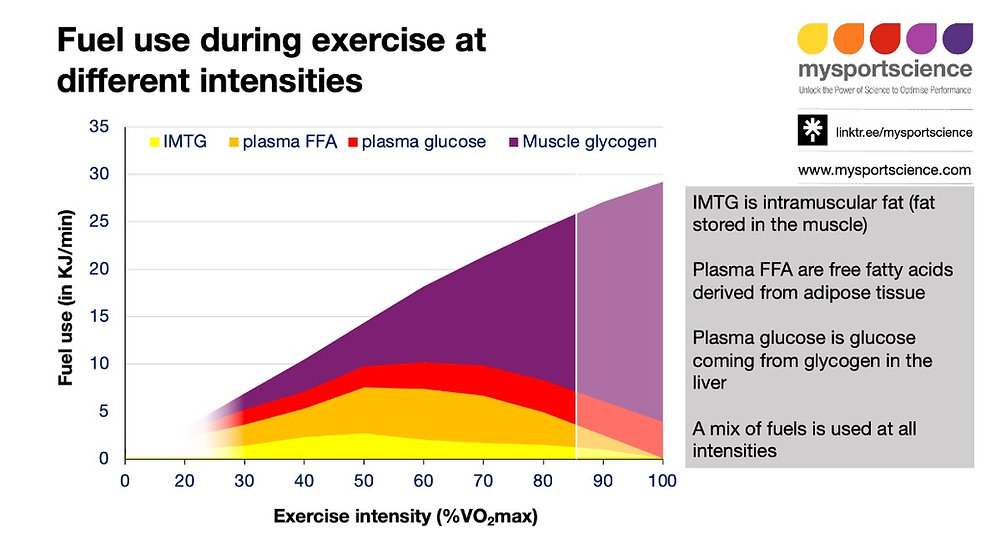Endurance athletes often hear the notion of “switching” between fuel sources during exercise, particularly when discussing carbohydrate and fat metabolism. This concept can lead to misunderstandings about how our body utilizes different energy pathways and how those pathways affect performance, particularly during extended efforts in demanding conditions.
When we engage in endurance activities, our muscles require adenosine triphosphate (ATP) for contraction, with stored ATP being minimal and rapidly depleted. Consequently, our body relies on four primary energy systems to regenerate ATP: glycolysis, aerobic metabolism, and two forms of oxidative phosphorylation. Each of these systems operates concurrently but varies in speed and capacity depending on the exercise intensity. Glycolysis, often mistakenly considered an anaerobic process, is intricately linked to oxygen availability and primarily functions to break down carbohydrates. This is especially relevant as intensity increases, prompting a rise in ATP demand and a corresponding acceleration in glycolysis, which ushers in more rapid carbohydrate utilization.
As exercise intensity escalates, ATP levels might not drop significantly; however, the balance between ATP and its breakdown products—adenosine diphosphate (ADP) and adenosine monophosphate (AMP)—changes. This shift signals the body to enhance energy production, often leading to an increase in pyruvate, a key intermediary in carbohydrate metabolism. However, should the production of pyruvate outpace its utilization, it is converted into lactic acid, which serves to regulate pyruvate levels and maintain glycolysis efficiency—even if lactic acid accumulation might eventually lead to muscle fatigue and discomfort.
At the mitochondrial level, aerobic metabolism is driven by acetyl-CoA, which can be derived from both carbohydrates and fats. This is where misconceptions about a metabolic “switch” arise. Both pathways remain active, continuously producing acetyl-CoA, negating the idea that we can simply toggle between burning fat and carbohydrates. Instead, the intensity of exercise dictates the degree to which each fuel source is utilized. During steady, moderate intensity, fat oxidation levels are higher, and as intensity intensifies, carbohydrate metabolism takes precedence, showcasing the dynamic nature of these energy systems rather than a simple switch mechanism.
For endurance athletes, timing and type of nutrition intake become paramount. As exercise demands increase, so does the necessity for immediate carbohydrate availability, which can typically be supplied by muscle glycogen—the most accessible energy source. Nutrition timing plays a critical role in ensuring that muscle glycogen stores are adequately filled pre-race and strategically replenished during long-duration events to sustain performance. With this in mind, athletes should prioritize consuming carbohydrates in the hours leading up to competition to maximize glycogen storage. However, during prolonged efforts, a continuous supply of carbohydrates throughout the event is most effective. The capacity to tolerate these carbohydrates can significantly influence performance; thus, testing various fueling strategies during training to ascertain individual tolerance and preferences is crucial.
Hydration also plays a complex role in endurance events. An athlete’s ability to maintain fluid balance is directly linked to performance, especially in challenging conditions where sweat loss can be substantial. The right hydration strategy involves not only water but also electrolytes to replace minerals lost through sweat. Tailoring hydration strategies according to weather conditions, exertion level, and individual sweat rates can help in optimizing performance and recovery.
The intersection of metabolic efficiency and fuel utilization comes into play as well. Athlete adaptation through training can enhance fat oxidation, allowing for a greater proportion of energy to be derived from fat during sustained efforts. This adaptation is particularly advantageous because muscle glycogen is a limited resource and tends to be the primary energy source used during higher intensities. Therefore, including long, steady-state efforts in training, designed particularly for optimizing fat utilization, can improve metabolic efficiency and delay fatigue during races.
Recovery strategies also warrant attention. Post-exercise, the focus should be on restoring glycogen stores effectively. Consuming carbohydrates paired with protein soon after training can accelerate glycogen resynthesis, while also aiding muscle repair. This dual approach emphasizes that recovery is not merely a single event but should be a comprehensive strategy that accounts for various physiological needs.
Finally, it’s essential to critically evaluate supplements that claim to improve performance. In a disciplined training regime, the right supplements—like branch-chain amino acids (BCAAs) or specific carbohydrates—can supplement performance, stimulate recovery, or support muscle repair, provided they complement a well-rounded diet.
In conclusion, endurance athletes must understand that rather than switching from one fuel source to another, both carbohydrates and fats are continuously utilized, with their contributions varying based on exercise intensity and duration. A nuanced grasp of nutrition timing, hydration strategies, metabolic efficiency, and recovery tactics is essential for optimizing endurance performance. All these factors converge to protect muscle glycogen and improve an athlete’s capacity to perform under demanding physical conditions. A practical takeaway for athletes is to test and refine fueling strategies during training, ensuring they can effectively maintain energy levels and performance throughout long-duration events.
